Carol Baldwin's Blog, page 53
August 10, 2015
Behind the Scenes of Prisoner B-3087
Last week I reviewed Alan Gratz's acclaimed Holocaust book, Prisoner B-3087. Today, Alan generously agreed to answer questions about what this book has meant to him both professional and personally.
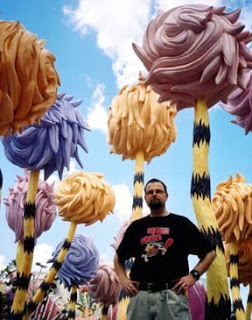
CAROL: I understand Scholastic contacted you first, to see if you were interested in writing this book. Can you share what went into that decision making process for you?
ALAN: Yes, Scholastic approached me. Jack and his wife Ruth took his story to Scholastic, and they immediately saw that it would make a great book. But neither Jack nor Ruth are writers, so Scholastic asked me to write the book. Once I heard Jack’s account of his time in the camps, I couldn't resist—it was such an incredible story! In particular, I liked that he survived. So many stories of the Holocaust of course did not end so well. And I knew that for writing middle grade, that would be important.
CAROL: What was you process for writing the book? I assumed you interviewed Jack at least once.
ALAN: I worked on the book for a while before I ever met Jack in person, using what he and his wife had told Scholastic about his experiences in World War II and doing a lot of research on the concentration camps on my own. Then, about halfway through writing the first draft, I got to fly to New York and meet Jack. We spent the afternoon at the Holocaust Museum in Manhattan, where some artifacts of Ruth's time during the war are on display.
Jack's memory isn't what it once was, and he wasn't able to remember the answers to some of the questions I had for him. But later, when he read my first draft of the book, a lot of things came back to him. I think he needed the world of the book to help jog his memory. Writing this book became a real process of discovery as Jack and I uncovered some memories he didn't know he had. I'm pleased that I was able to write something that brought the past to life again for him, even if a great deal of that past was painful.
CAROL What did you do next? I assumed you consulted other books on the Holocaust. Or did you interview other survivors? What stands out as the most helpful "other" source of information?
ALAN: I didn't interview other survivors, but I did read more accounts of the Holocaust--both academic and personal. I think the personal accounts were the most useful. It's the details I was looking for, not the general history. Specific things that happened to people. Events I could use to show real things that happened in the Holocaust. The reality was horrific enough without having to make things up.
CAROL: This is a novel and you make it clear in the back that it is a work of fiction. I don't know if you are able to distill how you wove together Jack's story with other information about the Holocaust, but your process interests me. How did you know when to take liberties with Jack's story? Perhaps an example or two might be helpful.
ALAN: Almost everything that happens to Jack in the book is real. But as I said before, Jack's memory isn't what it once was, and Scholastic really wanted us to see each of the ten camps Jack went to. And of course as a writer, I didn't want to just see them, I wanted something important to happen in each one. So while I had amazing stories from Jack's actual experience to put in--like hiding under the floorboards from Amon Goeth, or dealing with Moonface the kapo again and again, or watching the boy Fred die, or almost dying and then being tattooed at Birkenau--there were other times where I needed to fill in the blanks in Jack's memory. He remembered being at the salt mines, but not much more than the statues there. So I added, from reading another survivor's account, the scene where Jack sees the murdered body of a Jew who worked with the Nazis in the Krakow ghetto. Later, Jack remembered being at Bergen Belsen, but didn't have a specific story to tell about that experience. I had Jack see the "zoo" they kept at that the concentration camp, where the animals were fed better than the prisoners. Again, if something happens TO Jack, it's a good bet it really happened to him. It's the stuff he just sees and witnesses that I sometimes added, as I say in the back of the book, to give a fuller and more complete vision of the Holocaust. This was, after all, a book we expected to be used in Holocaust studies in schools.
CAROL: Do you consider this a collaborative work? Did Jack read any of your drafts and/or have input into them?
ALAN: As I said, Jack and his wife Ruth did read the drafts, and they gave me feedback on them. But I really did all the writing. Their input was more to get the details right. Part of the discovery was big things, but sometimes it was just small details. When I first interviewed him, Jack didn't remember the street he grew up on. When I chose one of the few streets in the Krakow ghetto then to be his home street for the story, he read that and immediately remembered that it wasn't right--and then DID remember the correct street. It was an odd book to write in that way--it was like the character I was writing would pop up every now and then and tell me, "No! Wait! That's not how it really happened!"
CAROL Have you done any public appearances with Jack?
ALAN: Jack and I filmed a video for Scholastic, which went on a DVD shown to students before releasing them into the Scholastic Book Fairs at their schools. But we haven't done any public appearances together. He's in New York, and I'm in North Carolina. Jack and Ruth both used to do a lot of school visits, telling their stories of survival, but they're both much older now and have a harder time traveling. I do a lot of school visits in Jack's stead now, carrying the torch for him and his story to a new generation.
CAROL: How has writing this book affected you both personally and professionally?
ALAN: Personally, spending time with Jack and his story and the world of the Holocaust has made me appreciate what I have--food on the table, a roof over my head, my family, my freedom--so much more. It's so easy to get wrapped up in day-to-day First World Problems and think the world is falling apart around you. All I have to do is think about how Jack's world really DID fall apart around him, how he lost EVERYTHING, even his name, his very identity, and it puts things into real perspective.
Professionally, PRISONER B-3087 has been a huge book for me. We've already sold more than a quarter of a million copies--most of those through the Scholastic Book Fairs--which makes it easily my best-selling and most widely-read book. It's been nominated for a dozen state awards, and its won three of them. I get two or three letters from student readers every week, and all of them clamor for me to write more books about World War II. Which is exactly what Scholastic wants too! I just turned in the first draft of a book about an Irish boy who is a spy in Nazi Germany in World War II as a part of the Hitler Youth, and I'm busy developing another book about the war. I will be very happy if my career becomes writing middle grade World War II historical fiction if kids keep begging to read more!
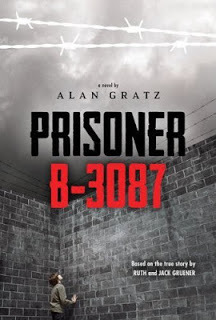
It's hard to keep up with all of Alan's books. His most recent novel, Code of Honor was just released. I'm currently reading The League of Seven , a steampunk/alternate history fantasy which won the 2015 SIBA Young Adult Book Award. Look for my review in a few weeks. And maybe a giveaway... although I think I have to save my autographed copy for my grandkids!


CAROL: I understand Scholastic contacted you first, to see if you were interested in writing this book. Can you share what went into that decision making process for you?
ALAN: Yes, Scholastic approached me. Jack and his wife Ruth took his story to Scholastic, and they immediately saw that it would make a great book. But neither Jack nor Ruth are writers, so Scholastic asked me to write the book. Once I heard Jack’s account of his time in the camps, I couldn't resist—it was such an incredible story! In particular, I liked that he survived. So many stories of the Holocaust of course did not end so well. And I knew that for writing middle grade, that would be important.
CAROL: What was you process for writing the book? I assumed you interviewed Jack at least once.
ALAN: I worked on the book for a while before I ever met Jack in person, using what he and his wife had told Scholastic about his experiences in World War II and doing a lot of research on the concentration camps on my own. Then, about halfway through writing the first draft, I got to fly to New York and meet Jack. We spent the afternoon at the Holocaust Museum in Manhattan, where some artifacts of Ruth's time during the war are on display.
Jack's memory isn't what it once was, and he wasn't able to remember the answers to some of the questions I had for him. But later, when he read my first draft of the book, a lot of things came back to him. I think he needed the world of the book to help jog his memory. Writing this book became a real process of discovery as Jack and I uncovered some memories he didn't know he had. I'm pleased that I was able to write something that brought the past to life again for him, even if a great deal of that past was painful.
CAROL What did you do next? I assumed you consulted other books on the Holocaust. Or did you interview other survivors? What stands out as the most helpful "other" source of information?
ALAN: I didn't interview other survivors, but I did read more accounts of the Holocaust--both academic and personal. I think the personal accounts were the most useful. It's the details I was looking for, not the general history. Specific things that happened to people. Events I could use to show real things that happened in the Holocaust. The reality was horrific enough without having to make things up.
CAROL: This is a novel and you make it clear in the back that it is a work of fiction. I don't know if you are able to distill how you wove together Jack's story with other information about the Holocaust, but your process interests me. How did you know when to take liberties with Jack's story? Perhaps an example or two might be helpful.
ALAN: Almost everything that happens to Jack in the book is real. But as I said before, Jack's memory isn't what it once was, and Scholastic really wanted us to see each of the ten camps Jack went to. And of course as a writer, I didn't want to just see them, I wanted something important to happen in each one. So while I had amazing stories from Jack's actual experience to put in--like hiding under the floorboards from Amon Goeth, or dealing with Moonface the kapo again and again, or watching the boy Fred die, or almost dying and then being tattooed at Birkenau--there were other times where I needed to fill in the blanks in Jack's memory. He remembered being at the salt mines, but not much more than the statues there. So I added, from reading another survivor's account, the scene where Jack sees the murdered body of a Jew who worked with the Nazis in the Krakow ghetto. Later, Jack remembered being at Bergen Belsen, but didn't have a specific story to tell about that experience. I had Jack see the "zoo" they kept at that the concentration camp, where the animals were fed better than the prisoners. Again, if something happens TO Jack, it's a good bet it really happened to him. It's the stuff he just sees and witnesses that I sometimes added, as I say in the back of the book, to give a fuller and more complete vision of the Holocaust. This was, after all, a book we expected to be used in Holocaust studies in schools.
CAROL: Do you consider this a collaborative work? Did Jack read any of your drafts and/or have input into them?
ALAN: As I said, Jack and his wife Ruth did read the drafts, and they gave me feedback on them. But I really did all the writing. Their input was more to get the details right. Part of the discovery was big things, but sometimes it was just small details. When I first interviewed him, Jack didn't remember the street he grew up on. When I chose one of the few streets in the Krakow ghetto then to be his home street for the story, he read that and immediately remembered that it wasn't right--and then DID remember the correct street. It was an odd book to write in that way--it was like the character I was writing would pop up every now and then and tell me, "No! Wait! That's not how it really happened!"
CAROL Have you done any public appearances with Jack?
ALAN: Jack and I filmed a video for Scholastic, which went on a DVD shown to students before releasing them into the Scholastic Book Fairs at their schools. But we haven't done any public appearances together. He's in New York, and I'm in North Carolina. Jack and Ruth both used to do a lot of school visits, telling their stories of survival, but they're both much older now and have a harder time traveling. I do a lot of school visits in Jack's stead now, carrying the torch for him and his story to a new generation.
CAROL: How has writing this book affected you both personally and professionally?
ALAN: Personally, spending time with Jack and his story and the world of the Holocaust has made me appreciate what I have--food on the table, a roof over my head, my family, my freedom--so much more. It's so easy to get wrapped up in day-to-day First World Problems and think the world is falling apart around you. All I have to do is think about how Jack's world really DID fall apart around him, how he lost EVERYTHING, even his name, his very identity, and it puts things into real perspective.
Professionally, PRISONER B-3087 has been a huge book for me. We've already sold more than a quarter of a million copies--most of those through the Scholastic Book Fairs--which makes it easily my best-selling and most widely-read book. It's been nominated for a dozen state awards, and its won three of them. I get two or three letters from student readers every week, and all of them clamor for me to write more books about World War II. Which is exactly what Scholastic wants too! I just turned in the first draft of a book about an Irish boy who is a spy in Nazi Germany in World War II as a part of the Hitler Youth, and I'm busy developing another book about the war. I will be very happy if my career becomes writing middle grade World War II historical fiction if kids keep begging to read more!

It's hard to keep up with all of Alan's books. His most recent novel, Code of Honor was just released. I'm currently reading The League of Seven , a steampunk/alternate history fantasy which won the 2015 SIBA Young Adult Book Award. Look for my review in a few weeks. And maybe a giveaway... although I think I have to save my autographed copy for my grandkids!

Published on August 10, 2015 03:00
August 3, 2015
Prisoner B-3087 by Alan Gratz
Congratulations to Tonya Goettl who won Wonder at the Edge of the World in last week's giveaway. Stay tuned for another great giveaway coming up soon. But first, two posts about Alan Gratz's middle grade Holocaust book.
I'm going to tell you from the start this review contains spoilers. It's a story driven by a young boy's desire and need to survive. But of course, the spoiler is implied by the very nature of this book. Prisoner B-3087 by North Carolina author Alan Gratz, is based on the true story of Jack Greuner, an Holocaust survivor.
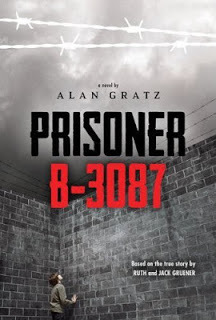 The book opens in 1939 in Kraków, Poland. Yanek Gruener (much later he changes his name to Jack) is ten-years-old and his father doesn't believe that Hitler's invasion of Poland will last for more than six months.
The book opens in 1939 in Kraków, Poland. Yanek Gruener (much later he changes his name to Jack) is ten-years-old and his father doesn't believe that Hitler's invasion of Poland will last for more than six months.
His family soon finds out how deadly wrong he is.
In magnificent prose that combines accurate details from Yanek's life with historical research, Alan Gratz has woven together a painful-but-true portrayal of a young boy's determination to survive which carried him through ten concentration camps in six horrific years.
Within three years the family goes from rationing; to losing jobs, their synagogue, and access to schools; to being sealed off within the walls of the ghetto. Life is horrible, but at least Yanek has his family around him. After his secret bar-mitzvah, he is terrified when the sick and elderly are killed. He thinks,
Yankee is sent to the Płaszów concentration camp and is amazed to find his Uncle Moshe who gives him survival instructions:
Don't share your portion of bread with someone, even if that person might be kept alive by what you have.Don't miss a roll call. You will be beaten.Don't show fear. The Nazis' dogs will attack.Don't befriend anyone.Always obey orders. Don't think for yourself.Don't question orders even if it means moving back-breaking rocks from one side of the yard and then back again. Don't fight back. If you do, you'll be killed.Don't complain when you are forced to sing and entertain Nazi soldiers feasting on a dinner. Look away so your stomach won't grumble and you won't be shot. Yanek clings to the smallest "comforts" in his pursuit of survival:
Next week Alan shares his process of writing Prisoner B-3087 and what it has meant to him both personally and professionally. To whet your appetite, here is a video of Alan with Jack and his wife Ruth, that Scholastic created.

I'm going to tell you from the start this review contains spoilers. It's a story driven by a young boy's desire and need to survive. But of course, the spoiler is implied by the very nature of this book. Prisoner B-3087 by North Carolina author Alan Gratz, is based on the true story of Jack Greuner, an Holocaust survivor.
 The book opens in 1939 in Kraków, Poland. Yanek Gruener (much later he changes his name to Jack) is ten-years-old and his father doesn't believe that Hitler's invasion of Poland will last for more than six months.
The book opens in 1939 in Kraków, Poland. Yanek Gruener (much later he changes his name to Jack) is ten-years-old and his father doesn't believe that Hitler's invasion of Poland will last for more than six months. His family soon finds out how deadly wrong he is.
In magnificent prose that combines accurate details from Yanek's life with historical research, Alan Gratz has woven together a painful-but-true portrayal of a young boy's determination to survive which carried him through ten concentration camps in six horrific years.
Within three years the family goes from rationing; to losing jobs, their synagogue, and access to schools; to being sealed off within the walls of the ghetto. Life is horrible, but at least Yanek has his family around him. After his secret bar-mitzvah, he is terrified when the sick and elderly are killed. He thinks,
I was a man and I wanted to do something. Something to stop the Nazis. To save my family. I asked myself over and over again what I could do to help, but I had no answer. p.50He argues that his family should not give in to the Nazi's demand to be "selected" and buys more time for them all. But one day he comes home and witnesses his parents being brutally herded away by the Nazi soldiers.
Yankee is sent to the Płaszów concentration camp and is amazed to find his Uncle Moshe who gives him survival instructions:
From now on, you have no name, no personality, no family, no friends. Do you understand? Nothing to identify you, nothing to care about. Not if you want to survive…We have only one purpose now: survive. Survive at all costs, Yanek. We cannot let these monsters tear us from the pages of the world. (pp. 68, 70)As Yanek is packed into cattle cars and moved from one concentration camp to another he learns what he must do to survive:
Don't share your portion of bread with someone, even if that person might be kept alive by what you have.Don't miss a roll call. You will be beaten.Don't show fear. The Nazis' dogs will attack.Don't befriend anyone.Always obey orders. Don't think for yourself.Don't question orders even if it means moving back-breaking rocks from one side of the yard and then back again. Don't fight back. If you do, you'll be killed.Don't complain when you are forced to sing and entertain Nazi soldiers feasting on a dinner. Look away so your stomach won't grumble and you won't be shot. Yanek clings to the smallest "comforts" in his pursuit of survival:
I stood at the water pump, scrubbing my body. It was bitterly cold out, but I didn't care. I would scrub my body, I decided, each and every morning, no matter how cold it was, no matter how tired I was. I was alive, and I meant to stay that way.
…I paid careful attention to where I had been tattooed. Too many others had let their tattoos get infected, and that had taken them to the camp surgeon. You didn't want to go to the camp surgeon. Ever. I even rubbed my teeth with my wet fingers--we had not toothbrushes or toothpaste, of course, but it felt important to remember what it was like to be human. (p. 136)As the war ends, Yanek's will to survive does not:
The war had come to Dachau, and any moment a shell or a bomb might fall on our building and kill us all. So many times I had wished for a bomb to fall on me, to end my suffering, but now I prayed that no bomb would hit me. Not now, when I was so close to the end! If only I could survive a little longer, I thought, just a little longer-- (p. 242)As I said in the beginning of this review, it is obvious that Yanek Gruener does survive. So, it's not a spoiler to quote the last lines of this memorable book:
I stepped on board the train and didn't look back. For nine years I had done everything I could to survive. Not it was time to live. (p.256)Next week Alan shares his process of writing Prisoner B-3087 and what it has meant to him both personally and professionally. To whet your appetite, here is a video of Alan with Jack and his wife Ruth, that Scholastic created.
Next week Alan shares his process of writing Prisoner B-3087 and what it has meant to him both personally and professionally. To whet your appetite, here is a video of Alan with Jack and his wife Ruth, that Scholastic created.

Published on August 03, 2015 03:00
July 27, 2015
Wonder at the Edge of the World- and a Giveaway!
To be honest, at first I didn't think about historical fantasy being a genre until I read
Wonder at the Edge of the World
by Nicole Helget and was contemplating how I wanted to review it. But then I realized I've read many books with both historical and magical elements--although typically they take place prior to the 20th century.
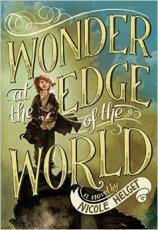
Set in Kansas right before the Civil War, this is the story of how a young girl, Hallelujah Wonder; and her best friend, Eustace, who is a slave, deliver a dangerous Medicine Head to the cold depths of Antarctica to prevent a Captain Greeney, a wicked Navy captain from using it to work evil.
In a nutshell, these are the historical and magical elements of this middle grade book that is a story of adventure, friendship, and sacrifice.
The reader gets a great glimpse into Hallelujah's (who prefers to be called Lu) character when she tells the reader that she intends to be "the first lady scientist in Kansas--maybe the only scientist at all in this sunbaked, throny-plant, tree-lonely, dirty-water, skinny-animal, dusty-air, grasshopper-happy, God-forsaken place." (p. 8,9) We also find out that her role model is her father who Captain Greeney murdered. He was not only a great explorer who discovered Antarctica, but he brought home a number of valuable artifacts. So valuable that they are hidden in a cave which only Lu and Eustace know about.
One of the artifacts, the Medicine Head that talks, can only be heard by certain individuals--including Lu. Bundled in a crate with the instructions, "KEEP COOL. DO NOT DESTROY!" Lu feels the head calling to her. When she can't resist touching it, she sees visions from the past; including images of Captain Greeney pursuing her father in order to possess the Medicine Head's power.
With Captain Greeney on her trail, but now knowing all of the Head's powers, Lu decides it's her job to get the Head to Antarctica--where it is cold and will never be destroyed.
At the same time, pre-Civil War unrest infiltrates Tolerone, her midwest town. A fight between the Abolitionists and slave owners leads to a devastating fire leaving Eustace temporarily without a master. Recognizing that this is a once in a lifetime opportunity to be free, Eustace leaves Kansas with Lu on her quest to take the Medicine Head to Antarctica.
Like I said, the story mixes fantasy with history and I enjoyed the historical parts the best--which shows you what kind of reader I am! I particularly appreciated how Lu describes the changes she sees in Eustace after leaving Kansas and arriving in New Bedford, Massachusetts where they hope to find passage to Antarctica:
"Eustace is walking funny. He moves through the lanes of New Bedford with a confidence I never saw in him at home." (p. 206)
Seeing Eustace's freedom through Lu's eyes tells the reader a lot about both characters:
*******To win a copy of this novel for yourself or for a middle grade reader, leave me a comment by 6 PM on Wednesday, July 29. If you want to increase your chance of winning, please share on Facebook or Twitter and let me know in your comment which you did.
This review was first posted on LitChat on July 2, 2015.


Set in Kansas right before the Civil War, this is the story of how a young girl, Hallelujah Wonder; and her best friend, Eustace, who is a slave, deliver a dangerous Medicine Head to the cold depths of Antarctica to prevent a Captain Greeney, a wicked Navy captain from using it to work evil.
In a nutshell, these are the historical and magical elements of this middle grade book that is a story of adventure, friendship, and sacrifice.
The reader gets a great glimpse into Hallelujah's (who prefers to be called Lu) character when she tells the reader that she intends to be "the first lady scientist in Kansas--maybe the only scientist at all in this sunbaked, throny-plant, tree-lonely, dirty-water, skinny-animal, dusty-air, grasshopper-happy, God-forsaken place." (p. 8,9) We also find out that her role model is her father who Captain Greeney murdered. He was not only a great explorer who discovered Antarctica, but he brought home a number of valuable artifacts. So valuable that they are hidden in a cave which only Lu and Eustace know about.
One of the artifacts, the Medicine Head that talks, can only be heard by certain individuals--including Lu. Bundled in a crate with the instructions, "KEEP COOL. DO NOT DESTROY!" Lu feels the head calling to her. When she can't resist touching it, she sees visions from the past; including images of Captain Greeney pursuing her father in order to possess the Medicine Head's power.
With Captain Greeney on her trail, but now knowing all of the Head's powers, Lu decides it's her job to get the Head to Antarctica--where it is cold and will never be destroyed.
At the same time, pre-Civil War unrest infiltrates Tolerone, her midwest town. A fight between the Abolitionists and slave owners leads to a devastating fire leaving Eustace temporarily without a master. Recognizing that this is a once in a lifetime opportunity to be free, Eustace leaves Kansas with Lu on her quest to take the Medicine Head to Antarctica.
Like I said, the story mixes fantasy with history and I enjoyed the historical parts the best--which shows you what kind of reader I am! I particularly appreciated how Lu describes the changes she sees in Eustace after leaving Kansas and arriving in New Bedford, Massachusetts where they hope to find passage to Antarctica:
"Eustace is walking funny. He moves through the lanes of New Bedford with a confidence I never saw in him at home." (p. 206)
Seeing Eustace's freedom through Lu's eyes tells the reader a lot about both characters:
I try to feel what Eustace is feeling right now. I'm sure he misses his ma. I know he does. But if he had stayed in Tolerone, he'd probably have been separated form her away. He'd probably have been shipped off to work all day, every day, for mean old slave owners who would never appreciate a single thing he did or knew. They'd probably never realize how smart Eustace is. They'd probably never appreciate how loyal he is. They'd probably never see how strong and courageous he is. Or how forgiving he is. Even if he is a mama's boy and hits girls.
I wonder if he's looking around and thinking about all the possibilities he has. All those things had had hoped for his life, about being a cowboy or a scientist, are suddenly possible. I feel happy for him. But I feel a bit of unhappiness, too. I know that at some point, our journey, successful or not, will be over, and Eustace and I will have to separate. (p. 218)When Lu finally rids herself of the Medicine Head, she's no longer a prisoner to its whims. She has found her freedom; in the same way that Eustace has found his.
*******To win a copy of this novel for yourself or for a middle grade reader, leave me a comment by 6 PM on Wednesday, July 29. If you want to increase your chance of winning, please share on Facebook or Twitter and let me know in your comment which you did.
This review was first posted on LitChat on July 2, 2015.

Published on July 27, 2015 03:00
July 20, 2015
SCBWI Florida Workshop Part VII- Questions, Answers, & Gold Nuggets
This is my final post from the 2015 Florida SCBWI young adult workshop with Erica Rand Silverman, an agent with Sterling Lord Literistic, and Jacquelyn Mitchard, author and editor-in-chief at Merit Press. Click here for Part I (Why Write Young Adult); Part II (Querying); Part III (Pitches); Part IV (Marketing Yourself and Your Work); Part V (Building a Lasting Career), and Part VI (Finding a YA Voice).
As promised, this post is a compendium of Jacquelyn's and Erica's answers to questions and other nuggets of writerly wisdom. *********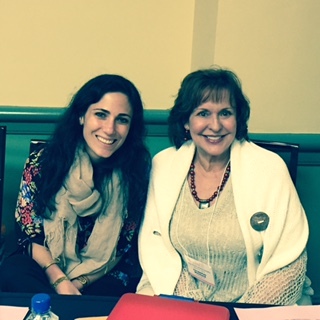
Who is your ideal client? Someone who is hopeful, competent, committed to their story, and wish to make it the best possible book. Someone who is flexible and takes suggestions in a spirit of generosity and is not defensive. Sometimes this can be tested by suggesting revisions. Will this potential client take my suggestions? This works both ways though--the client has to be happy with the suggestions also.Clients who are also educators and/or performers. We can package them that way, brand them. Looking for clients who are engaged in the industry. When we meet and talk, we’re feeding each other information. Clients teach us too. Be confident in what you want. If my client says yes to one hundred notes—that makes me concerned. Don’t just hand your work over.
What are some of your favorite moments?When a client and I both see the same aspect of a story in the revision process.Erika: "I love the diversity of my client list. My day is full of people with lots of different types of talents. Illustrators, nonfiction and fiction writers."Jacqueline: "As an editor, I love when I read a book that I want to be a part of Merit Press. As a writer, when I can see the end and am able to create a symphonic ending. Before I get the ten pages of notes of things I need to change."
What advice do you have for beginners?
Write. Find mentors, conferences, critique groups. Read all the time. Jacqueline: "You should be swimming in words." Erica: "Be an active reader, really notice the writing."
Can you share your writing process?
Jacqueline: "I plan and research before I write. I do more than I need. I have a large tupperware container full of folders of notes, research, and books I've consulted. I don’t just let my characters take me places. I would never build a cathedral and then realize I don’t have the cement."
What is your best advice to writers?
Jacqueline: “Don’t give up! Even If you haven’t been able to get the ring on the first round. Slow and steady wins the race.”Erica: "Don’t give up and publish it yourself right away. Let someone else give you money for your work. Let someone else edit your work; that will give grace to it. The critical process doesn’t happen without a group effort.”
What is the your biggest "No-No?"
Erika: "Don’t send a query to my home. Don’t take my suggestions and then sign with another agent or decide to self-publish." Jacqueline: "Don’t take my notes and suggestions and go to another publishing house and say, 'Can you give me more money?' Don’t have a specific advance in mind."
What are your thoughts on self-publishing?
Self-publishing is starting to wane. The cost/benefit ratio is not there. Erica: "Don't self-publish unless there’s a strategic reason for doing it." Jacqueline: "Don't make a fear-based decision."
 http://www.discoverychannel.com.au/im...NUGGETS
http://www.discoverychannel.com.au/im...NUGGETS
If you’re going to resist the editing process, you might as well self-publish.The young adult market is doing well in foreign markets because adolescent issues transcend cultures.Agents are looking for ways to adore writers. We want writers to succeed because that’s the dream we’ve showed up for.Magical realism is when magical things happen in everyday life. Example: When a character touches leaves, they turn blue. It has more realism than magic and is a different genre than fantasy. Bone Gap, a new young adult book by Laura Ruby, is an example. Re: boundaries in young adult literature. You set the cringe factor. Your market is also the teacher, librarian, parent who is purchasing the book. Your job is to startle people; to be bold, but not just for the sake of shock. Be creative and artful. Just because you can create a terrific image, doesn’t mean you should.

As promised, this post is a compendium of Jacquelyn's and Erica's answers to questions and other nuggets of writerly wisdom. *********

Who is your ideal client? Someone who is hopeful, competent, committed to their story, and wish to make it the best possible book. Someone who is flexible and takes suggestions in a spirit of generosity and is not defensive. Sometimes this can be tested by suggesting revisions. Will this potential client take my suggestions? This works both ways though--the client has to be happy with the suggestions also.Clients who are also educators and/or performers. We can package them that way, brand them. Looking for clients who are engaged in the industry. When we meet and talk, we’re feeding each other information. Clients teach us too. Be confident in what you want. If my client says yes to one hundred notes—that makes me concerned. Don’t just hand your work over.
What are some of your favorite moments?When a client and I both see the same aspect of a story in the revision process.Erika: "I love the diversity of my client list. My day is full of people with lots of different types of talents. Illustrators, nonfiction and fiction writers."Jacqueline: "As an editor, I love when I read a book that I want to be a part of Merit Press. As a writer, when I can see the end and am able to create a symphonic ending. Before I get the ten pages of notes of things I need to change."
What advice do you have for beginners?
Write. Find mentors, conferences, critique groups. Read all the time. Jacqueline: "You should be swimming in words." Erica: "Be an active reader, really notice the writing."
Can you share your writing process?
Jacqueline: "I plan and research before I write. I do more than I need. I have a large tupperware container full of folders of notes, research, and books I've consulted. I don’t just let my characters take me places. I would never build a cathedral and then realize I don’t have the cement."
What is your best advice to writers?
Jacqueline: “Don’t give up! Even If you haven’t been able to get the ring on the first round. Slow and steady wins the race.”Erica: "Don’t give up and publish it yourself right away. Let someone else give you money for your work. Let someone else edit your work; that will give grace to it. The critical process doesn’t happen without a group effort.”
What is the your biggest "No-No?"
Erika: "Don’t send a query to my home. Don’t take my suggestions and then sign with another agent or decide to self-publish." Jacqueline: "Don’t take my notes and suggestions and go to another publishing house and say, 'Can you give me more money?' Don’t have a specific advance in mind."
What are your thoughts on self-publishing?
Self-publishing is starting to wane. The cost/benefit ratio is not there. Erica: "Don't self-publish unless there’s a strategic reason for doing it." Jacqueline: "Don't make a fear-based decision."
 http://www.discoverychannel.com.au/im...NUGGETS
http://www.discoverychannel.com.au/im...NUGGETSIf you’re going to resist the editing process, you might as well self-publish.The young adult market is doing well in foreign markets because adolescent issues transcend cultures.Agents are looking for ways to adore writers. We want writers to succeed because that’s the dream we’ve showed up for.Magical realism is when magical things happen in everyday life. Example: When a character touches leaves, they turn blue. It has more realism than magic and is a different genre than fantasy. Bone Gap, a new young adult book by Laura Ruby, is an example. Re: boundaries in young adult literature. You set the cringe factor. Your market is also the teacher, librarian, parent who is purchasing the book. Your job is to startle people; to be bold, but not just for the sake of shock. Be creative and artful. Just because you can create a terrific image, doesn’t mean you should.

Published on July 20, 2015 09:54
July 13, 2015
SCBWI Florida Workshop Part VI- Holden and Augustus: What We Mean When We Talk About Voice in YA
This is my sixth post from the 2015 Florida SCBWI young adult workshop with Erica Rand Silverman, an agent with Sterling Lord Literistic, and Jacquelyn Mitchard, author and editor-in-chief at Merit Press. Click here for Part I (Why Write Young Adult); Part II (Querying); Part III (Pitches); Part IV (Marketing Yourself and Your Work); and Part V (Building a Lasting Career).
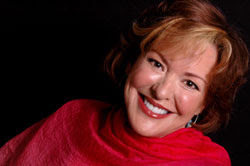 Jacqueline Mitchard
Jacqueline Mitchard
facilitated this part of the workshop Using Augustus Waters from Fault in our Stars by John Green and Holden Caulfield from Catcher in the Rye by J.D. Salinger as examples, Jacqueline Mitchard made the following points about creating voice:
This is not the time to be restrained.Teenagers are dramatic. They’re over the top. Now or never. Black or white. Let them tell their stories. Speech can be overblown. Let out the drama queens!Examples of how teens talk:
“My life is over.” “No none is ever going to love me again.” “I’m a total loser.”
Teens blurt stuff out. They make mistakes in judgment.They're self-centered. A girl doesn’t care if the world blows up, unless it ruins her hair. What they care about the most is themselves. Madly self-invested.Teens focus small. Is she going to get what she needs to survive?Write in bursts. Not necessarily grammatically correct. Use syntax and rhythm to create patterns. Awkward speech mimics the natural and conversational talk of teens.Teens have heartbreaking passion and honesty. All their money is in the middle of the table all the time.The way the character perceives the world shows who he or she is. Using this information develops deep POV.Teens are all about self-sacrifice and loyalty. Who you are within the tribe is very important. Novelists must create a personality and moral structure. The novel will be about how the character changes and grows.Erica Rand Silverman added: Teens have a strong sense of fairness and justice. Most of them are dedicated to learning and school. They have lots of thoughts and a lot of time to notice things.***********Personal note: Writing this blog post legitimized the fact that both of my protagonists in Half-Truths are prone to exaggeration. It also made me think about how I was the same way as a teenager--self-absorbed in my own heady thoughts! Remembering my own life experiences will help me make Lillie Harris and Kate Dinsmore more authentic.
 From: Writersdock.com
From: Writersdock.com
Here is a narrative exercise to help you work on the voice of your characters. Write twelve lines of dialogue in which one teen has a secret that he or she is trying to keep from the other teen. Use ONLY speech. No tags or descriptive beats allowed! Feel free to share your writing in the comments if you try this exercise.
*******This series of posts concludes next week with Erica's and Jacqueline's answers to some FAQs and other miscellaneous nuggets. I'm glad that these posts have been helpful to many of you!
 Jacqueline Mitchard
Jacqueline Mitchardfacilitated this part of the workshop Using Augustus Waters from Fault in our Stars by John Green and Holden Caulfield from Catcher in the Rye by J.D. Salinger as examples, Jacqueline Mitchard made the following points about creating voice:
This is not the time to be restrained.Teenagers are dramatic. They’re over the top. Now or never. Black or white. Let them tell their stories. Speech can be overblown. Let out the drama queens!Examples of how teens talk:
“My life is over.” “No none is ever going to love me again.” “I’m a total loser.”
Teens blurt stuff out. They make mistakes in judgment.They're self-centered. A girl doesn’t care if the world blows up, unless it ruins her hair. What they care about the most is themselves. Madly self-invested.Teens focus small. Is she going to get what she needs to survive?Write in bursts. Not necessarily grammatically correct. Use syntax and rhythm to create patterns. Awkward speech mimics the natural and conversational talk of teens.Teens have heartbreaking passion and honesty. All their money is in the middle of the table all the time.The way the character perceives the world shows who he or she is. Using this information develops deep POV.Teens are all about self-sacrifice and loyalty. Who you are within the tribe is very important. Novelists must create a personality and moral structure. The novel will be about how the character changes and grows.Erica Rand Silverman added: Teens have a strong sense of fairness and justice. Most of them are dedicated to learning and school. They have lots of thoughts and a lot of time to notice things.***********Personal note: Writing this blog post legitimized the fact that both of my protagonists in Half-Truths are prone to exaggeration. It also made me think about how I was the same way as a teenager--self-absorbed in my own heady thoughts! Remembering my own life experiences will help me make Lillie Harris and Kate Dinsmore more authentic.
 From: Writersdock.com
From: Writersdock.com Here is a narrative exercise to help you work on the voice of your characters. Write twelve lines of dialogue in which one teen has a secret that he or she is trying to keep from the other teen. Use ONLY speech. No tags or descriptive beats allowed! Feel free to share your writing in the comments if you try this exercise.
*******This series of posts concludes next week with Erica's and Jacqueline's answers to some FAQs and other miscellaneous nuggets. I'm glad that these posts have been helpful to many of you!

Published on July 13, 2015 03:30
July 6, 2015
SCBWI Florida Workshop Part V- Building A Lasting Career
This is my fifth post from the 2015 Florida SCBWI young adult workshop with Erica Rand Silverman, an agent with Sterling Lord Literistic, and Jacquelyn Mitchard, author and editor-in-chief at Merit Press. Click here for Part I (Why Write Young Adult); Part II (Querying); Part III (Pitches); and Part IV (Marketing Yourself and Your Work). In this post they both share what it means to build your career beyond one book.
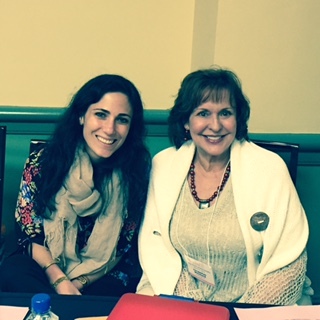
Both Erika and Jacqueline used the language of romance to discuss aspects of the publishing business Jacqueline said, "Acquiring a manuscript is like dating. Sometimes if it doesn't happen in the first twenty minutes there's a flaw in the machinery." She also said, "If I fall in love with a manuscript I'm hoping readers will fall in love with it." Erika called the process of finding the right publisher for a book "matchmaking." http://zionica.com/2014/05/23/short-h... your book is accepted by a publishing house you’re bringing people into the "Circle of Trust" about your story.After you sell your first book, keep writing. You want to feed your audience by giving them something similar. It is more strategic to keep going with same genre as your first book, if possible.Going from your first to second book can be hard. Write what excites you, not for the market, not your agent, and not your publisher. Sometimes with a second book you actually know about the industry, so you end up writing for your agent, editors, publishing house, or fans. Don't forget: You still need to just write for you. Your first book might be easier because it’s been in you for so long.Don’t disturb your own momentum. Start your second book as soon as possible. If your book does or does not sell well-- either one can mess with your head. Don't forget the secondary (institutional) market. Make sure your book is nominated for state lists and awards. Librarians will be your best friends; cultivate these relationships. Say thank you and remember people. Keep personal relationships with people you meet. Don’t act like a diva or take yourself too seriously. Don’t be high-handed with book sellers. Everyone is a spoke in the wheel. Make friends with people in the industry.Embrace opportunities. Both work for hire or intellectual property projects might supplement your career. (Personal note: Nine years ago my last publisher, Maupin House, asked me if I would be interested in contributing to their Craft Plus series. Since my own motto is "Never say no" (to writing requests!) I accepted the assignment and was glad I did.Make friends with your publishing team. Have realistic expectations but inspire the people you work with to think creatively. “I have thought about A and B can you help me with C?” Fill out your author information sheet keeping in mind that it will help the marketing team at your publisher.Market yourself and your books. You can’t depend on your publisher. “No matter who you are, you have to hustle,” Jacqueline said. Your agent and your publicist will work together getting you traction (visibility) so that more people will connect you with your book. These things feed into each other. You want to be known as a networker, and an accessible human being "without being slutty." Keep attending conferences, workshops, and industry events.Strategize your publishing schedule with your agent and publisher. Ask, "Why are you publishing the book now?" Books published closer to awards are more likely to be in people’s minds. Do you want to publish in the summer when school is out? Near the holidays? It's okay to question and be your own advocate. Ask, “Tell me how I can help." Make it a partnership and become a part of the publishing strategy. But don’t become too obsessed with the business side. Jacqueline warned, "Writers write. Don’t be a three-ring circus. Be the best one ring circus you can be.”
http://zionica.com/2014/05/23/short-h... your book is accepted by a publishing house you’re bringing people into the "Circle of Trust" about your story.After you sell your first book, keep writing. You want to feed your audience by giving them something similar. It is more strategic to keep going with same genre as your first book, if possible.Going from your first to second book can be hard. Write what excites you, not for the market, not your agent, and not your publisher. Sometimes with a second book you actually know about the industry, so you end up writing for your agent, editors, publishing house, or fans. Don't forget: You still need to just write for you. Your first book might be easier because it’s been in you for so long.Don’t disturb your own momentum. Start your second book as soon as possible. If your book does or does not sell well-- either one can mess with your head. Don't forget the secondary (institutional) market. Make sure your book is nominated for state lists and awards. Librarians will be your best friends; cultivate these relationships. Say thank you and remember people. Keep personal relationships with people you meet. Don’t act like a diva or take yourself too seriously. Don’t be high-handed with book sellers. Everyone is a spoke in the wheel. Make friends with people in the industry.Embrace opportunities. Both work for hire or intellectual property projects might supplement your career. (Personal note: Nine years ago my last publisher, Maupin House, asked me if I would be interested in contributing to their Craft Plus series. Since my own motto is "Never say no" (to writing requests!) I accepted the assignment and was glad I did.Make friends with your publishing team. Have realistic expectations but inspire the people you work with to think creatively. “I have thought about A and B can you help me with C?” Fill out your author information sheet keeping in mind that it will help the marketing team at your publisher.Market yourself and your books. You can’t depend on your publisher. “No matter who you are, you have to hustle,” Jacqueline said. Your agent and your publicist will work together getting you traction (visibility) so that more people will connect you with your book. These things feed into each other. You want to be known as a networker, and an accessible human being "without being slutty." Keep attending conferences, workshops, and industry events.Strategize your publishing schedule with your agent and publisher. Ask, "Why are you publishing the book now?" Books published closer to awards are more likely to be in people’s minds. Do you want to publish in the summer when school is out? Near the holidays? It's okay to question and be your own advocate. Ask, “Tell me how I can help." Make it a partnership and become a part of the publishing strategy. But don’t become too obsessed with the business side. Jacqueline warned, "Writers write. Don’t be a three-ring circus. Be the best one ring circus you can be.”
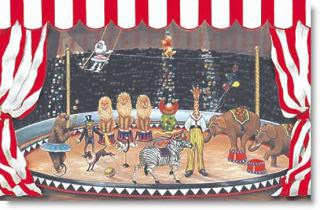 https://kenlai.wordpress.com/2011/08/...
https://kenlai.wordpress.com/2011/08/...


Both Erika and Jacqueline used the language of romance to discuss aspects of the publishing business Jacqueline said, "Acquiring a manuscript is like dating. Sometimes if it doesn't happen in the first twenty minutes there's a flaw in the machinery." She also said, "If I fall in love with a manuscript I'm hoping readers will fall in love with it." Erika called the process of finding the right publisher for a book "matchmaking."
 http://zionica.com/2014/05/23/short-h... your book is accepted by a publishing house you’re bringing people into the "Circle of Trust" about your story.After you sell your first book, keep writing. You want to feed your audience by giving them something similar. It is more strategic to keep going with same genre as your first book, if possible.Going from your first to second book can be hard. Write what excites you, not for the market, not your agent, and not your publisher. Sometimes with a second book you actually know about the industry, so you end up writing for your agent, editors, publishing house, or fans. Don't forget: You still need to just write for you. Your first book might be easier because it’s been in you for so long.Don’t disturb your own momentum. Start your second book as soon as possible. If your book does or does not sell well-- either one can mess with your head. Don't forget the secondary (institutional) market. Make sure your book is nominated for state lists and awards. Librarians will be your best friends; cultivate these relationships. Say thank you and remember people. Keep personal relationships with people you meet. Don’t act like a diva or take yourself too seriously. Don’t be high-handed with book sellers. Everyone is a spoke in the wheel. Make friends with people in the industry.Embrace opportunities. Both work for hire or intellectual property projects might supplement your career. (Personal note: Nine years ago my last publisher, Maupin House, asked me if I would be interested in contributing to their Craft Plus series. Since my own motto is "Never say no" (to writing requests!) I accepted the assignment and was glad I did.Make friends with your publishing team. Have realistic expectations but inspire the people you work with to think creatively. “I have thought about A and B can you help me with C?” Fill out your author information sheet keeping in mind that it will help the marketing team at your publisher.Market yourself and your books. You can’t depend on your publisher. “No matter who you are, you have to hustle,” Jacqueline said. Your agent and your publicist will work together getting you traction (visibility) so that more people will connect you with your book. These things feed into each other. You want to be known as a networker, and an accessible human being "without being slutty." Keep attending conferences, workshops, and industry events.Strategize your publishing schedule with your agent and publisher. Ask, "Why are you publishing the book now?" Books published closer to awards are more likely to be in people’s minds. Do you want to publish in the summer when school is out? Near the holidays? It's okay to question and be your own advocate. Ask, “Tell me how I can help." Make it a partnership and become a part of the publishing strategy. But don’t become too obsessed with the business side. Jacqueline warned, "Writers write. Don’t be a three-ring circus. Be the best one ring circus you can be.”
http://zionica.com/2014/05/23/short-h... your book is accepted by a publishing house you’re bringing people into the "Circle of Trust" about your story.After you sell your first book, keep writing. You want to feed your audience by giving them something similar. It is more strategic to keep going with same genre as your first book, if possible.Going from your first to second book can be hard. Write what excites you, not for the market, not your agent, and not your publisher. Sometimes with a second book you actually know about the industry, so you end up writing for your agent, editors, publishing house, or fans. Don't forget: You still need to just write for you. Your first book might be easier because it’s been in you for so long.Don’t disturb your own momentum. Start your second book as soon as possible. If your book does or does not sell well-- either one can mess with your head. Don't forget the secondary (institutional) market. Make sure your book is nominated for state lists and awards. Librarians will be your best friends; cultivate these relationships. Say thank you and remember people. Keep personal relationships with people you meet. Don’t act like a diva or take yourself too seriously. Don’t be high-handed with book sellers. Everyone is a spoke in the wheel. Make friends with people in the industry.Embrace opportunities. Both work for hire or intellectual property projects might supplement your career. (Personal note: Nine years ago my last publisher, Maupin House, asked me if I would be interested in contributing to their Craft Plus series. Since my own motto is "Never say no" (to writing requests!) I accepted the assignment and was glad I did.Make friends with your publishing team. Have realistic expectations but inspire the people you work with to think creatively. “I have thought about A and B can you help me with C?” Fill out your author information sheet keeping in mind that it will help the marketing team at your publisher.Market yourself and your books. You can’t depend on your publisher. “No matter who you are, you have to hustle,” Jacqueline said. Your agent and your publicist will work together getting you traction (visibility) so that more people will connect you with your book. These things feed into each other. You want to be known as a networker, and an accessible human being "without being slutty." Keep attending conferences, workshops, and industry events.Strategize your publishing schedule with your agent and publisher. Ask, "Why are you publishing the book now?" Books published closer to awards are more likely to be in people’s minds. Do you want to publish in the summer when school is out? Near the holidays? It's okay to question and be your own advocate. Ask, “Tell me how I can help." Make it a partnership and become a part of the publishing strategy. But don’t become too obsessed with the business side. Jacqueline warned, "Writers write. Don’t be a three-ring circus. Be the best one ring circus you can be.”
 https://kenlai.wordpress.com/2011/08/...
https://kenlai.wordpress.com/2011/08/...
Published on July 06, 2015 03:00
SCBWI Workshop Part V- Building A Lasting Career
This is my fifth post from the 2015 Florida SCBWI young adult workshop with Erica Rand Silverman, an agent with Sterling Lord Literistic, and Jacquelyn Mitchard, author and editor-in-chief at Merit Press. Click here for Part I (Why Write Young Adult); Part II (Querying); Part III (Pitches); and Part IV (Marketing Yourself and Your Work). In this post they both share what it means to build your career beyond one book.

Both Erika and Jacqueline used the language of romance to discuss aspects of the publishing business Jacqueline said, "Acquiring a manuscript is like dating. Sometimes if it doesn't happen in the first twenty minutes there's a flaw in the machinery." She also said, "If I fall in love with a manuscript I'm hoping readers will fall in love with it." Erika called the process of finding the right publisher for a book "matchmaking." http://zionica.com/2014/05/23/short-h...
http://zionica.com/2014/05/23/short-h...
When your book is accepted by a publishing house you’re bringing people into the "Circle of Trust" about your story.After you sell your first book, keep writing. You want to feed your audience by giving them something similar. It is more strategic to keep going with same genre as your first book, if possible.Going from your first to second book can be hard. Write what excites you, not for the market, not your agent, and not your publisher. Sometimes with a second book you actually know about the industry, so you end up writing for your agent, editors, publishing house, or fans. Don't forget: You still need to just write for you. Your first book might be easier because it’s been in you for so long.Don’t disturb your own momentum. Start your second book as soon as possible. If your book does or does not sell well-- either one can mess with your head. Don't forget the secondary (institutional) market. Make sure your book is nominated for state lists and awards. Librarians will be your best friends; cultivate these relationships. Say thank you and remember people. Keep personal relationships with people you meet. Don’t act like a diva or take yourself too seriously. Don’t be high-handed with book sellers. Everyone is a spoke in the wheel. Make friends with people in the industry.Embrace opportunities. Both work for hire or intellectual property projects might supplement your career. (Personal note: Nine years ago my last publisher, Maupin House, asked me if I would be interested in contributing to their Craft Plus series. Since my own motto is "Never say no" (to writing requests!) I accepted the assignment and was glad I did.Make friends with your publishing team. Have realistic expectations but inspire the people you work with to think creatively. “I have thought about A and B can you help me with C?” Fill out your author information sheet keeping in mind that it will help the marketing team at your publisher.Market yourself and your books. You can’t depend on your publisher. “No matter who you are, you have to hustle,” Jacqueline said. Your agent and your publicist will work together getting you traction (visibility) so that more people will connect you with your book. These things feed into each other. You want to be known as a networker, and an accessible human being "without being slutty." Keep attending conferences, workshops, and industry events.Strategize your publishing schedule with your agent and publisher. Ask, "Why are you publishing the book now?" Books published closer to awards are more likely to be in people’s minds. Do you want to publish in the summer when school is out? Near the holidays? It's okay to question and be your own advocate. Ask, “Tell me how I can help." Make it a partnership and become a part of the publishing strategy. But don’t become too obsessed with the business side. Jacqueline warned, "Writers write. Don’t be a three-ring circus. Be the best one ring circus you can be.” https://kenlai.wordpress.com/2011/08/...
https://kenlai.wordpress.com/2011/08/...


Both Erika and Jacqueline used the language of romance to discuss aspects of the publishing business Jacqueline said, "Acquiring a manuscript is like dating. Sometimes if it doesn't happen in the first twenty minutes there's a flaw in the machinery." She also said, "If I fall in love with a manuscript I'm hoping readers will fall in love with it." Erika called the process of finding the right publisher for a book "matchmaking."
 http://zionica.com/2014/05/23/short-h...
http://zionica.com/2014/05/23/short-h...When your book is accepted by a publishing house you’re bringing people into the "Circle of Trust" about your story.After you sell your first book, keep writing. You want to feed your audience by giving them something similar. It is more strategic to keep going with same genre as your first book, if possible.Going from your first to second book can be hard. Write what excites you, not for the market, not your agent, and not your publisher. Sometimes with a second book you actually know about the industry, so you end up writing for your agent, editors, publishing house, or fans. Don't forget: You still need to just write for you. Your first book might be easier because it’s been in you for so long.Don’t disturb your own momentum. Start your second book as soon as possible. If your book does or does not sell well-- either one can mess with your head. Don't forget the secondary (institutional) market. Make sure your book is nominated for state lists and awards. Librarians will be your best friends; cultivate these relationships. Say thank you and remember people. Keep personal relationships with people you meet. Don’t act like a diva or take yourself too seriously. Don’t be high-handed with book sellers. Everyone is a spoke in the wheel. Make friends with people in the industry.Embrace opportunities. Both work for hire or intellectual property projects might supplement your career. (Personal note: Nine years ago my last publisher, Maupin House, asked me if I would be interested in contributing to their Craft Plus series. Since my own motto is "Never say no" (to writing requests!) I accepted the assignment and was glad I did.Make friends with your publishing team. Have realistic expectations but inspire the people you work with to think creatively. “I have thought about A and B can you help me with C?” Fill out your author information sheet keeping in mind that it will help the marketing team at your publisher.Market yourself and your books. You can’t depend on your publisher. “No matter who you are, you have to hustle,” Jacqueline said. Your agent and your publicist will work together getting you traction (visibility) so that more people will connect you with your book. These things feed into each other. You want to be known as a networker, and an accessible human being "without being slutty." Keep attending conferences, workshops, and industry events.Strategize your publishing schedule with your agent and publisher. Ask, "Why are you publishing the book now?" Books published closer to awards are more likely to be in people’s minds. Do you want to publish in the summer when school is out? Near the holidays? It's okay to question and be your own advocate. Ask, “Tell me how I can help." Make it a partnership and become a part of the publishing strategy. But don’t become too obsessed with the business side. Jacqueline warned, "Writers write. Don’t be a three-ring circus. Be the best one ring circus you can be.”
 https://kenlai.wordpress.com/2011/08/...
https://kenlai.wordpress.com/2011/08/...
Published on July 06, 2015 03:00
June 29, 2015
SCBWI Florida Workshop Part IV- Marketing Yourself and Your Work
This is my third blog post from the 2015 Florida SCBWI young adult workshop. Erica Rand Silverman is an agent with Sterling Lord Literistic and Jacquelyn Mitchard is a prolific author as well as an editor-in-chief at Merit Press. Click here for Part I (Why Write Young Adult); Part II (Querying), and Part III (Pitches).*********"Connect-Be Authentic-Be Creative-Give Back-Enjoy"by Erica Rand Silverman
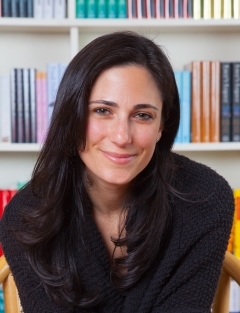
Connecting means finding your readers and other writers.Writers can be creative even in marketing.When you help others (give back to the writing community) you move your self forward.Be open-minded, set goals and constraints for yourself. Marketing should not be about wasting your time away from writing. It is about finding a place in the writing community.
 Image courtesy Nikki Woods
Image courtesy Nikki Woodshttp://www.nikkiwoodsmedia.com/blog/w...-
Sure-Fire-Ways-to-Market-Your-Book-on-a-Budget.jpgExplore yourself as an author. Pay attention to your thoughts and ideas. When you have a thought about writing- share it! Break down thoughts that go into your head, and think of possible ways of giving these to others. Post nuggets that will interest others. In other words, "feed the hamster." (Note: I'm trying to use Twitter for that purpose. Follow me at CbaldwinCarol)Use social media to engage with your audience and market yourself. (Have you seen my Facebook posts with snippets from Half-Truths?)Be yourself when you go out to schools. "Do you."Consider who your readers are. How will you find them? Social media, schools, libraries?Reach out to adults who work with young people. (i.e., media specialists and educators. Keeping in mind that you are giving back).Have an engaging presentation which links to Common Core. Your presentation should develop certain skills, educate, inspire, and entertain. Here are examples from Linda Phillips' book Crazy and from Joyce Hostetter's book Blue.Develop a one page handout. Among other things, it can focus on comprehension, the author’s use of language, as well as figurative language. Hook up with a local book store. A bookseller will tell you who buys the most books. Start where you live or where you grew up. Create downloadables for kids. WhereYouTube is for the retail market, SchoolTube reaches the institutional market. Create an appropriate video and educators may find you there.Share travel plans with your publisher who should help you find out bookstores. Do blog tours. Get interviewed on teen blogs such as The Teen Book Guru. Be available to teen reviewers; here is a youtube book review by one of my favorite teen readers and writers, Anna Graham.Make a video of yourself so your publisher sees you are comfortable with public speaking and will send you out.Writing is a performing art. You have to put your shyness on hold and invite readers into your world.
 Image courtesy of Robert Bidinotto
Image courtesy of Robert Bidinottohttp://www.bidinotto.com/2013/03/10-w...

Published on June 29, 2015 03:00
June 25, 2015
A Not so Literary Post
I rarely blog two times a week and as most of you know, my posts are usually about reading or writing. But today I'm sharing links to my friend Barbara Younger's Friend for the Ride blog.
Barbara blogs about menopause and all things related to mid-life and women's health issues. She has an ongoing series about ladies room doors and recently posted two blogs worth of doors I found on our cross-country trip.
Without further ado, here is Part One of The Potty Trip of all Potty Trips featuring this gas station in Broken Bow, Nebraska:


Here is Part Two, featuring these two doors from Rudy's Barbecue in Lubbock Texas to show that occasionally men's rooms doors are interesting too.
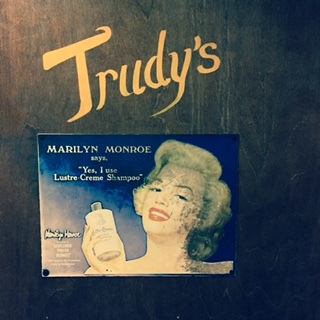
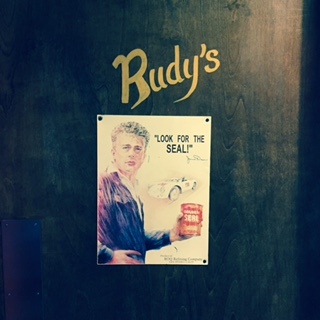
And a door that didn't make the cut, along the Sammamash River Trail in Washington:
 Hope you click the above links and enjoy a quick trip across the U.S. via the potties I found along the way!
Hope you click the above links and enjoy a quick trip across the U.S. via the potties I found along the way!
Barbara blogs about menopause and all things related to mid-life and women's health issues. She has an ongoing series about ladies room doors and recently posted two blogs worth of doors I found on our cross-country trip.
Without further ado, here is Part One of The Potty Trip of all Potty Trips featuring this gas station in Broken Bow, Nebraska:


Here is Part Two, featuring these two doors from Rudy's Barbecue in Lubbock Texas to show that occasionally men's rooms doors are interesting too.


And a door that didn't make the cut, along the Sammamash River Trail in Washington:
 Hope you click the above links and enjoy a quick trip across the U.S. via the potties I found along the way!
Hope you click the above links and enjoy a quick trip across the U.S. via the potties I found along the way!
Published on June 25, 2015 16:21
June 22, 2015
SCBWI Florida Workshop Part III- Share Your Perfect Pitch and Find Out How it Sells!
This is my third blog post from the Florida SCBWI young adult workshop. Erica Rand Silverman is an agent with Sterling Lord Literistic and Jacquelyn Mitchard is a prolific author as well as an editor-in-chief at Merit Press. Click here for Part I and Part II.
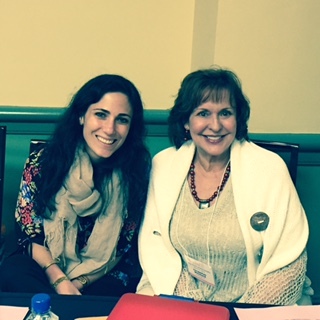 Erica and Jacquelyn interwove their remarks
Erica and Jacquelyn interwove their remarks
into a tapestry of great advice.Don’t over reach. You can use the “X” meets “Y” as long as you use examples that haven’t sold million copies. If you do, use a title that is known, but not over-known.Don’t send a photo of yourself.Don't say a family member loves your manuscript. Don't send with spelling or grammar errors.Do Be concise, simple, and straightforward. Do List writing programs and classes you have attended as well as degrees and awards. Be relevant, current, and honest.Do “Nuggetize” your work. Erika said to ask, "What is my books' essence?" Jacquelyn said it this way: "Find the statue in the block of granite." Do Try to include the character’s stakes in the pitch.Do reference a client's work you appreciate. Do say why you are pitching to this particular agent.Sometimes: Writing the pitch before you write the book helps you to conceptualize it. But writing it afterwards can help too.[My experience is that it is helpful to write a pitch at different points while working on a manuscript. Before, during, and after!]
 Image courtesy of baseball-clip-art.com
Image courtesy of baseball-clip-art.com
http://www.baseball-clip-art.com/base... their presentation, Erika and Jacquelyn invited participants to write a pitch and read it out loud. Building on a previously-written pitch, I read the following:
They liked it!

 Erica and Jacquelyn interwove their remarks
Erica and Jacquelyn interwove their remarksinto a tapestry of great advice.Don’t over reach. You can use the “X” meets “Y” as long as you use examples that haven’t sold million copies. If you do, use a title that is known, but not over-known.Don’t send a photo of yourself.Don't say a family member loves your manuscript. Don't send with spelling or grammar errors.Do Be concise, simple, and straightforward. Do List writing programs and classes you have attended as well as degrees and awards. Be relevant, current, and honest.Do “Nuggetize” your work. Erika said to ask, "What is my books' essence?" Jacquelyn said it this way: "Find the statue in the block of granite." Do Try to include the character’s stakes in the pitch.Do reference a client's work you appreciate. Do say why you are pitching to this particular agent.Sometimes: Writing the pitch before you write the book helps you to conceptualize it. But writing it afterwards can help too.[My experience is that it is helpful to write a pitch at different points while working on a manuscript. Before, during, and after!]
 Image courtesy of baseball-clip-art.com
Image courtesy of baseball-clip-art.comhttp://www.baseball-clip-art.com/base... their presentation, Erika and Jacquelyn invited participants to write a pitch and read it out loud. Building on a previously-written pitch, I read the following:
Dear Erica,
I am writing to you because I met you at the Florida 2015 SCBWI conference and heard of your interest in young adult books. The other books you represent, X and X are Y. [Where "X" are titled of books Erica represents and "Y" is the reason I like them.]
Against the backdrop of segregation and Southern debutante society, Half-Truths is a young adult novel about an unexpected friendship between two teen girls-- one white, the other a descendent of a slave. When they discover a family heirloom that belongs to both families, their friendship is tested and proved. In the process of confronting her prejudices and fears, each girl finds a place in the New South.
Written from alternating points-of-view, my first young adult novel is complete at 80,000 words. I am the author of two nonfiction books for adults as well as many articles and stories for adults and children. I coordinated a SCBWI critique group for over twenty years, have taught writing to both adults and teens, and presented at numerous educational, library, and writing conferences. I review books and share insights into writing at www.carolbaldwinblog.blogspot.comand co-publish Talking Story, a digital newsletter which promotes literacy.************ Guess what?
They liked it!

Published on June 22, 2015 03:00



